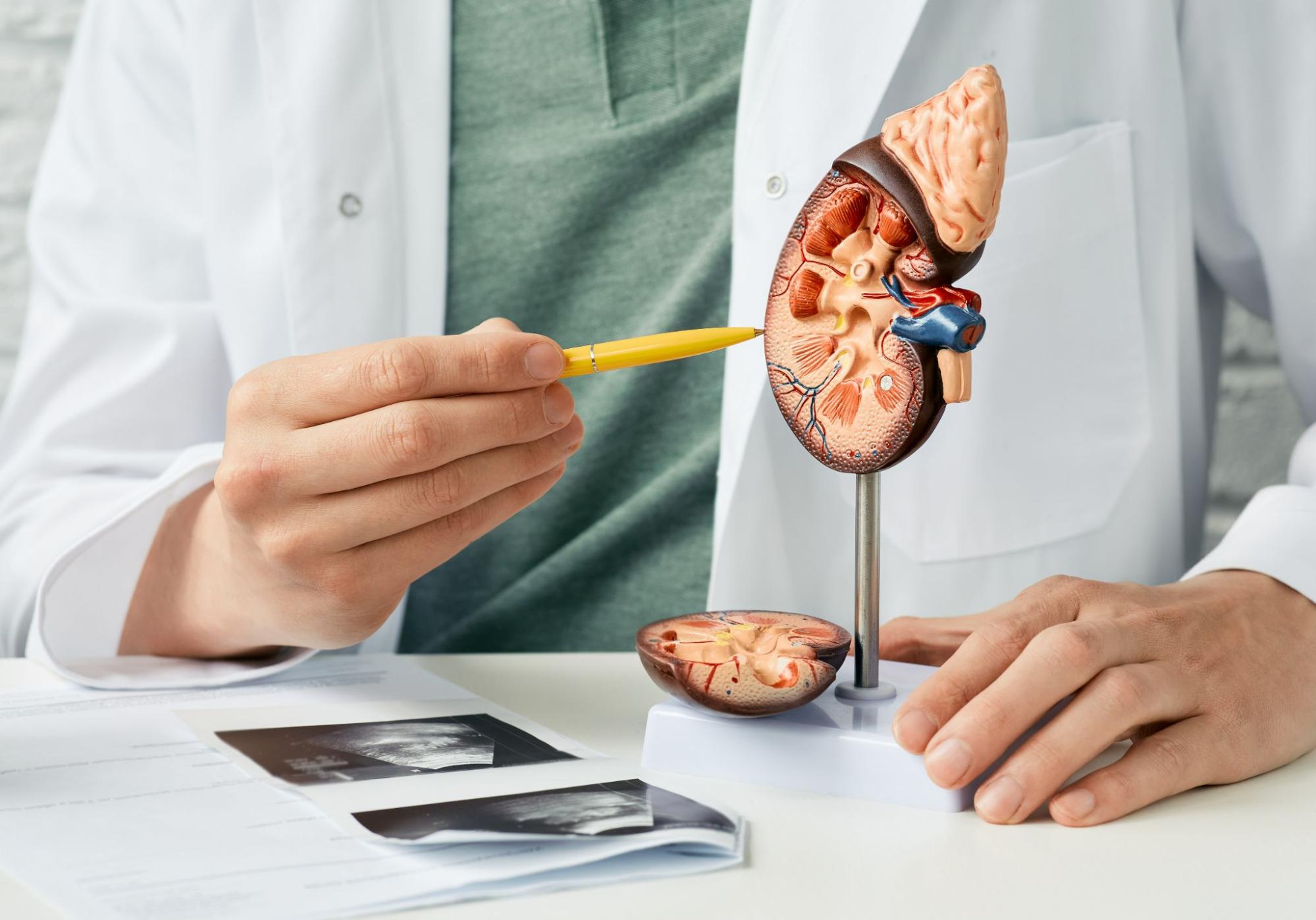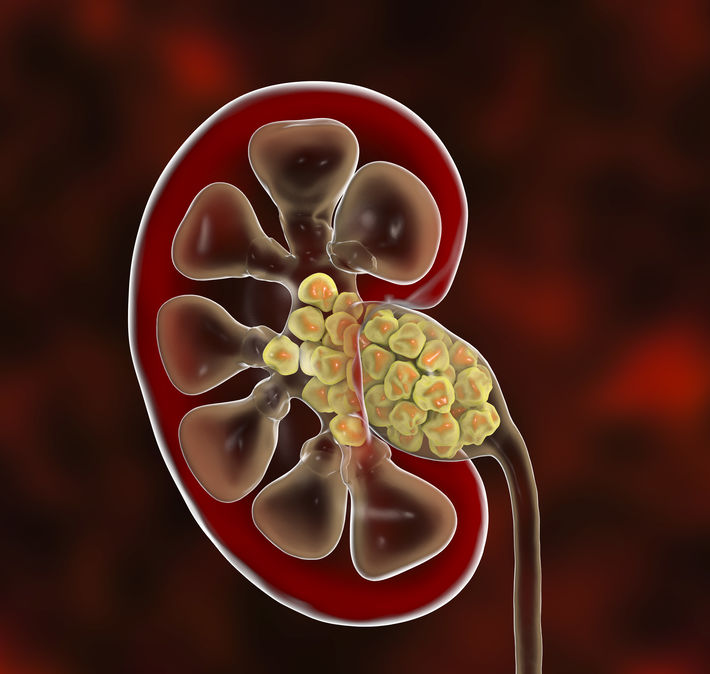Retrograde Intrarenal Surgery in Hoshiarpur
Retrograde intrarenal surgery (RIRS) in Hoshiarpur is contemplated the best treatment for complex kidney stone cases. Minimally invasive RIRS involves no cuts or stitches and is suitable for both adults and children. Read ahead to know all about RIRS in Hoshiarpur.
Procedure Name Retrograde Intrarenal Surgery (RIRS)
Surgery Type Minimally Invasive/Outpatient Procedure
Hospital Stay 1 day
Duration of Surgery 60-90 minutes
Type of Anesthesia General anesthesia, spinal anesthesia
Full Recovery 1 to 2 weeks
What Is Retrograde Intrarenal Surgery (RIRS)?
RIRS Retrograde Intrarenal Surgery in Hoshiarpur is a procedure used to remove kidney stones and treat other renal disorders in a minimally invasive manner.
The term “retrograde” relates to the manner in which the surgeon approaches the kidney during the surgery (in the opposite direction of the normal flow of urine – from the urinary tract to the kidneys). The term "intrarenal" refers to the fact that the surgery takes place inside the kidney.
In this surgery, a fiber-optic endoscope, which is a tube with a camera and light source, is inserted through the urinary tract opening called the urethra into the bladder. It travels via the ureter (the tube that connects the bladder to the kidneys) to the urine-collecting part of the kidney, where it can access the stones present.
A laser fiber probe (commonly Holmium: YAG laser) breaks down (powders) the kidney stones. The larger ones are broken down into smaller fragments and removed with either forceps or other advanced instruments like stone baskets. Incredibly small particles are washed out with urine or saline irrigation.
In some cases, a stent is used to improve drainage, which may be inserted before or after surgery. Retrograde intrarenal surgery (RIRS) in Hoshiarpur with stent placement is an advanced procedure performed by a urologist or someone with clinical expertise in the procedure of RIRS.
RIRS is the preferred surgical option for the treatment of kidney stones that have a size of less than 2 cm and cannot be successfully treated via other methods.
It is efficient and reliable in its use as it does not require open surgery or making any incisions on the kidney to remove the kidney stones. RIRS combines the ideal principles of ureteroscopy (examination of the upper urinary tract with a lighted viewing scope) and lithotripsy (use of shock waves to break up kidney stones) with a holmium laser (efficient for all stones with any composition) for ensuring complete removal of stones with minimal postoperative complications (retrograde intrarenal surgery with laser lithotripsy).
When Is The RIRS Procedure Preferred/Suitable?
This procedure is used as the go-to technique in a variety of cases such as:
- Stones that cannot be treated or have previously been treated unsuccessfully with procedures like SWL (shock wave lithotripsy) or percutaneous nephrolithotripsy (PCNL)
- For non-opaque stones that are not visible in traditional X-rays
- When the stones are immune to medications
- During the existence of anatomic abnormalities (of the kidneys or reno ureteral malformations)
- For the co-existence of renal and ureteral stones
- If both kidneys have stones, this procedure treats them with a single surgery and avoids multiple sessions
- Presence of multiple kidney stones including nephrocalcinosis
- If bleeding disorders are present
- For people who have to be treated to be completely stone-free (such as pilots, etc.)
- When performed as a combined or secondary procedure following PCNL
- For a patient who is obese or with musculoskeletal deformities
- When stones >3 cm (may require two or more sessions)
- In children with kidney stones where a less aggressive approach is preferred
- When there are strictures (narrowing) in the ureters
What Are The Pre-Surgery Steps For Retrograde Intrarenal Surgery Procedure?
- Health assessment through physical examination, blood tests, urine analysis, and responsiveness to anesthesia is done before the procedure.
- Antibiotics may be suggested by the doctor in case of infection beforehand. Diagnosing and imaging help to determine the size and location of the kidney stone. This also helps in determining any underlying diseases and overall health.
- Preoperative ureteral stents (Double J or DJ stents) are inserted before the procedure to help get better access to the kidney stone by dilating the ureter. They are not always necessary and are generally used in cases of UTI (urinary tract infections) as they help preserve renal functions.
- In children, passive dilatation before ureteroscopy helps the surgeon get better access in cases with ureteral abnormalities that may lead to obstruction of the instrument.
- Discuss the complete treatment beforehand with your doctor to remain aware of what goes on.
- Inform him/her in advance of all medicines you consume, if you are allergic to anesthesia, and about all health conditions.
- Stop smoking a few weeks before the surgery to prevent complications.
- Wear loose-fitting clothes to the surgery.
- On the day of the surgery, fasting is required 6-8 hours before the procedure.
- The following tests reports need to be with the patient on the day of surgery:
- Imaging tests (MRI, abdominal ultrasound, KUB or kidney, ureter, bladder)
- Blood test
- Urinalysis
- Blood urea nitrogen (BUN) test
How Is Retrograde Intrarenal Surgery (RIRS) Performed?
- General anesthesia is usually preferred over the spine as the patient may be subjected to pain and trauma due to inadequate relaxation of the ureters or uninhibited breathing.
- Guidewires, ureteral stents, or dilators can assist entry into the ureter. A safety guidewire is kept in the ureter and collecting system to prevent loss of access during stone manipulation and enables a DJ stent in case of perforation or after the procedure is completed.
- Ureteral dilators can be placed before to access the stone better, as access might be hindered due to ureteral tube or orifice constraints.
- An endoscope – a thin, long, flexible tube is used to enter the kidney via the ureter and helps identify the stone. This is an X-ray-guided procedure for the doctor to be able to see images on an external screen for better precision. The Holmium: YAG laser is used to blast the stones completely or into fragments using one or more combinations of the three settings of the laser:
Fragmentation: Here, the fragments produced are removed with a stone basket - a nitinol retrieval instrument.
Dusting: Here, energy is used to reduce the stone to fine dust and fragments smaller than 2 mm in diameter that will later pass via urine.
Popcorn Effect: This is used after fragmentation to produce smaller pieces. Forceps and other advanced equipment like stone baskets can also be used to remove the fragments.
If the double J stents are placed in the ureter after the surgery, they are kept there for 7-10 days to promote healing.
What Is The Post-Operative Care To Be Taken After Surgery (RIRS)?
- Post-completion of the retrograde renal surgery, a urine catheter can be placed in the urethra for a day or longer to reduce pain and problems while urinating.
- A 24-hour bed rest along with lots of fluid intake (at least 2.5 liters a day) is advised to prevent infections. The patient can resume their activities the following day if he/she feels healthy. A follow-up session with the doctor is crucial to monitor the success of the surgery.
- Post-operative stenting must be considered in patients with an increased risk of complications such as ureteral trauma or perforation, residual fragments, pregnancy, urinary tract infection, and bleeding.
- However, no DJ stent is required if the procedure is completed without any complication and clinically insignificant residual stone fragments are left. Patients are discharged on the following day post-surgery.
- The total recovery period is quite short; mostly, work can be resumed within 1-2 days.
- Patients are advised to eat fiber-rich food; avoid food with too many spices or high animal protein for a few weeks.
- It is ideal to avoid heavy workouts but stay active.
- With stents, it is instructed not to engage in vigorous exercise and outdoor sports activities.
- You should get in touch with your doctor immediately if you experience any abnormal symptoms.
What Are The Advantages Of Retrograde Intrarenal Surgery (RIRS)?
- Minimally invasive (no cuts needed), simple, and quick procedure
- Short hospital stay
- Short recovery time
- Less painful
- Minimal bleeding without scars
- Reduced risks of damage to renal tissue and other complications
- High success rate and low morbidity rate
- Suitable for children and adults both
What Are The Risks Associated With Retrograde Intrarenal Surgery (RIRS)?
Complications or risks associated with this intrarenal surgery are fairly uncommon and occur only in very few cases. Risks include:
- Fever
- Flank pain (pain in the upper abdomen, back, or sides)
- Urinary tract infection (UTI)
- Haematuria or blood in the urine
- Inability to urinate
- Procedural errors such as fornix rupture
- Trauma to kidneys
- Ureter narrowing and avulsion
- Sepsis
Conclusion
For kidney stones RIRS is a great procedure. However, despite the many indications and advantages of RIRS, it may not be a suitable surgical option if the size of the renal stones is more than 20 mm in diameter or when several small stones are present. In such cases, kidney stones can be treated better through a different method.
Everyone desires a simple and feasible treatment for their ailments, and RIRS certainly shines as a beacon of hope in the case of kidney stones as it is a reliable and safe surgical option.
Why Choose Medfin?
Surgery can be a daunting aspect, and feeling anxious is absolutely normal. The massive amount of information you can get from the internet may confuse you even more. This is where Medfin can help. Leave us the hefty tasks of finding the best hospital, the finest doctor, and the latest procedure at the lowest costs. Let us take charge while you sit back and focus on your health & recovery. Think surgery! Think Medfin!






